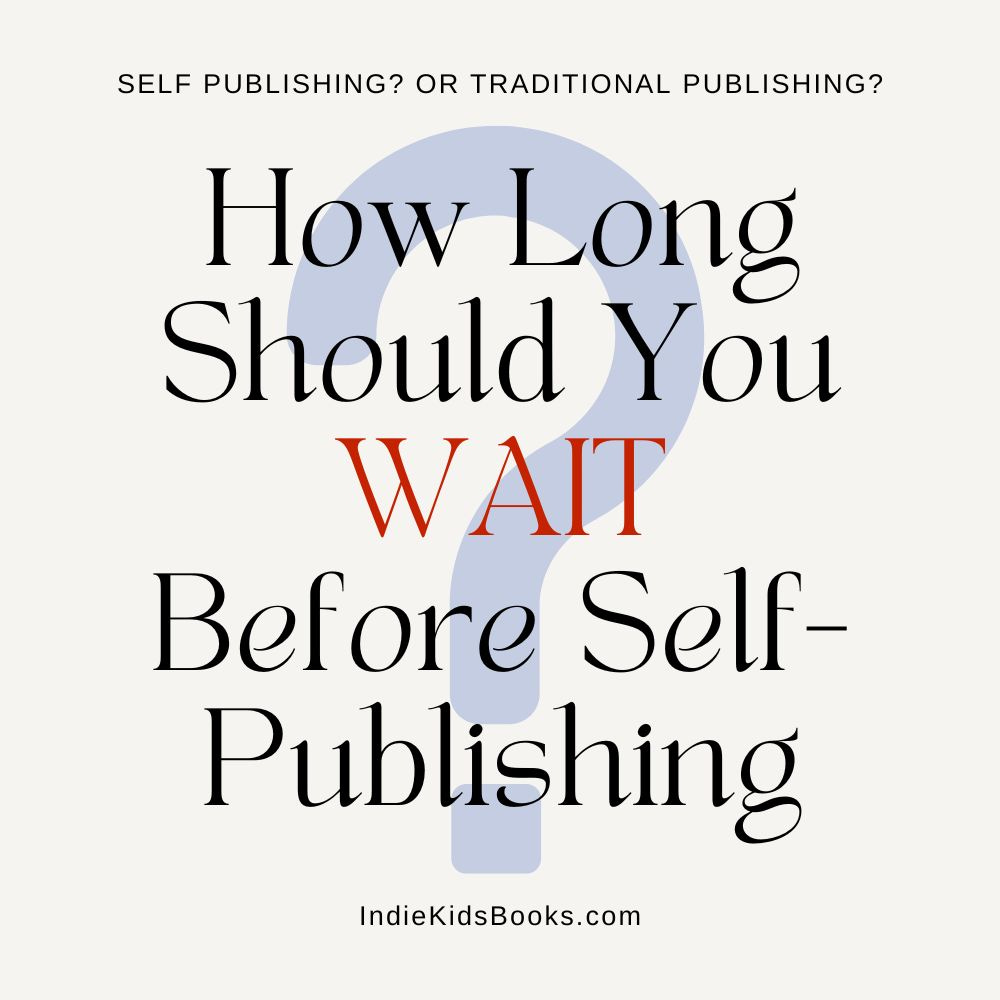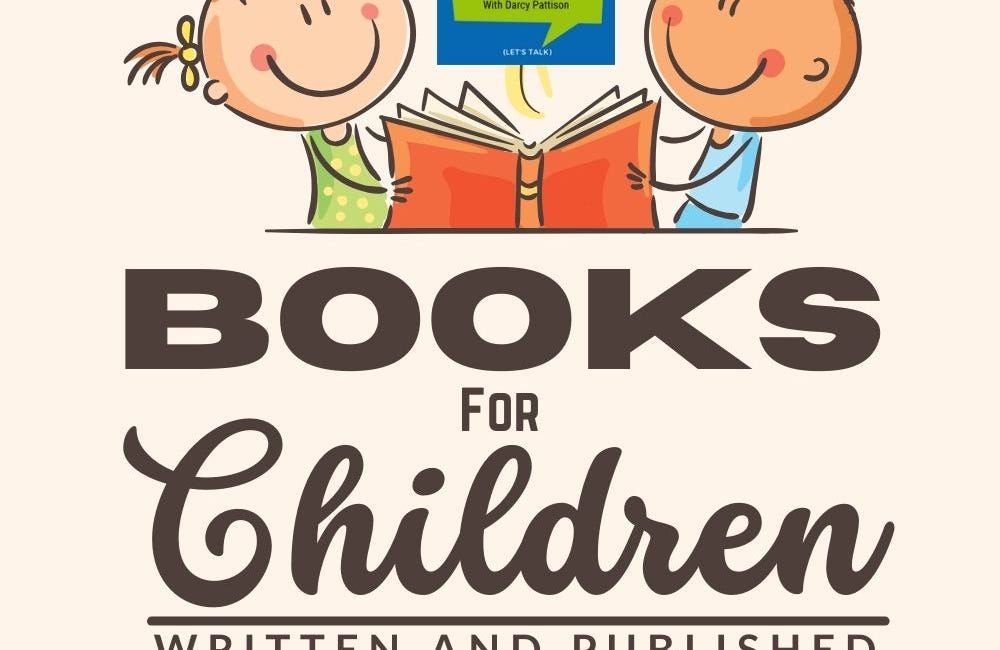How Long Should I Wait Before I Self-Publish?
Choices for publishing children's books.
I hear this question often: How long should I wait before I self-publish?
The good news here is that people now recognize that there are at least two viable options for publishing a children’s book. One is working with a publisher who licenses your copyright and then will publish and market the book. The other is to become a publisher yourself, create your book and bring it to market—commonly called self-publishing. In between these is the world of hybrids, publishers who offer partial services for a fee.
The idea behind the question is that you write a picture book or children’s novel and then your first choice is to market it to the legacy (traditional) publishers. This is a lengthy, difficult process. First, you must make contact with the editor in some way so they will actually read the manuscript. That might mean acquiring an agent who will submit for you, or it might mean attending a conference where that editor is speaking. Once a manuscript is in the editor’s hands, the process can still be lengthy. The editors work for a corporate beast which moves slowly. Three months in between emails is common. If they ask for revisions, the back-and-forth can take a year. One friend just reported that from idea to books in a bookstore will be six years.
Because it’s a lengthy, difficult process, some people ask, how long should I wait before self-publishing?
One-Off Books Will Not Sell
First, let me say that one-off books will not sell unless it’s for a specific market that can be easily reached. If your beloved family dog was unique and interesting, and you want to write about him, it’s unlikely to find a wide audience. Sure, write and publish that book for your family and friends. That’s a legitimate, and often important, thing to do. But it’s unlikely to sell well widely.
Likewise, if you only have one story and never plan to write another, it’s unlikely to interest a major publisher. If you self-publish it, you’re unlikely to attract a large audience and sales will be weak.
Instead, I’m talking to those who want to create a career writing children’s literature. For you, this is a lingering question: how long should I wait?
Choosing a Business Model
In reality, that question means which business model works for me and my publishing career.
Legacy publishing is slow, difficult, but results in books that sell in both the bookstore and education market. It’s great for those who write middle grade nonfiction and take three years to research and write about a topic. If they can turn that into a high-concept, high-stakes trade books, it can work fine.
If, however, you write short chapter books and can turn out three or four a year, legacy publishing’s pace can be frustrating. If education is your main market, self-publishing might be the right place for you.
The genre, speed of writing, expectations, marketing possibilities, and more all factor into a decision to go indie. Not the time you’ve waited for an editor to respond—unless that wait time drives a frustration that turns you to think about indie publishing.
Thinking about a Career
I urge you to think about your long-term goals. What do you want from a career in children’s literature, and how can you best achieve that?
The Kindle reader, which launched in 2007, combined with print-on-demand printers such as Ingram and Lulu, created indie career paths which are easy and profitable. Yet, twenty years later, critics still doubt that it’s effective. They are surprised that in the last 13 years, I’ve published over 60 books, many of them award winners. See my catalog here and my bio here.
For me, legacy publishing was too slow, not responsive to my creative needs, and not respectful of my creative opinions. As an indie publisher, I can decide what to publish, who will illustrate, and how to bring the book to market. For more information on self-publishing, read widely in this blog! Here’s a good starting point.
Still, it wasn’t an easy decision to start self-publishing because it meant I was starting a small business. In reality, all authors are start-up small businesses as they try to market their books to legacy publishers. But when you self-publish and start to earn money, then you must deal with taxes and other legal issues—you become a small business in a more structured way.
Running a small publishing house means you deal with finances, art direction, marketing and more. It’s not a question of “how long to wait?” It’s thinking through what such a decision will mean because it’s a different business plan.
LEGACY BUSINESS PLAN: You write. You create a network of connections that will help you reach the right editor with the right book; the publisher turns the story into a book. You create a network of connections that help you reach the right audience of parents, grandparents, teachers, and librarians.
INDIE BUSINESS PLAN: You write. You create a system of processes and strategies that help you turn a story into a book that can be delivered to the right customer at the right time. You create a network of connections that help you reach the right audience of parents, grandparents, teachers, and librarians.
For either way of publishing, you write. Everything starts with writing a great story, learning your craft and learning how to use words to convey information and emotion.
The next step is figuring out how to turn that story into a book that will reach readers. For legacy, you concentrate on finding the right editor whose company will accomplish that process—and hopefully do it well. For indie, you figure this out yourself. (Or, I try to help you figure it out in this blog! Start with the post below.)
The Ultimate Guide to Self-Publishing Children's Books - How to Get Started
When I started Indie Kids Book blog, it was with the idea that I would eventually write a book about how to self-publish children’s books. Instead, the blog has become more of a living document of ho…
The last step is the same for both business plans. Bring the book to market in such a way that it finds the right audience. Legacy publishing usually offers some help on this, but your book must compete with the other books from that publisher for attention. If your book is the lead book of a season, the marketing will be more extensive. As a newcomer, there will be less marketing muscle behind your book. As an indie, you can choose when and where to focus marketing. As a start-up business, your efforts will be harder at first, but as you publish more, you’ll strengthen your marketing efforts.
Either legacy or indie publishing works for children’s books. It’s your choice on how to accomplish your goals.
For me, I’ve published far more books in the last 13 years than I could have with legacy publishers. With 60+ books in print, I earn over $100K/year. I love Mims House, my publishing company, and it’s the default for publishing my next book. When I decided to go this route, I was committed: to emphasize this commitment, I bought 1000 ISBNs, and plan to use them all! I put my head down and worked for five years before I allowed myself to rethink the decision. By then, I was profitable, had award winning books (starred reviews, JLG selections, NSTA Outstanding Science Trade Books, etc). I loved the whole process of writing, publishing, and bringing books to market. Those were hard five years figuring out the processes of turning stories into books. (Now, I try to make these processes easy for YOU with this blog.) 13 years after starting this process, I’ve used about 250 ISBNs (each book gets four: hardcover, paperback, ebook, audiobook), and I’m eager to use the next 750.
How Long Should YOU Wait?
So, back to the question: how long should you wait until you decide to self-publish?
Many agents suggest that you approach them when you have at least three polished manuscripts ready to take to editors. This strengthens the idea that the agent, and eventually the editor, will be working with you to establish a career in children’s literature. One editor might acquire all three manuscripts, or three different editors will acquire the manuscripts. Either way, you’re on the path of establishing a career.
In the same way, indie-publishers needs to think long term.
If you choose the self-publishing business model, you are creating a small business, a small independent publishing house. I recommend that you have three polished manuscripts before you start self-publishing, too. That should give you one to three years of material to publish, which gives you time to establish strategies, partnerships, and processes for success. First books are hard! It gives you time to establish your publishing company as one that publishes high quality books with certain themes or ideas to reach certain readers.
Learn the Craft of Writing
For either business model, especially in the early years, concentrate on learning the craft of writing. Stories are what matter. Nonfiction stories that catch a child’s interest and feed their passion for knowledge. Fiction that touches their emotion, builds empathy. Stories that make kids laugh out loud. Kids who say to a friend, “You’ve GOT to read this book because…”
We are storytellers. Publishing is about putting those stories into the hands of the right reader at the right time. You can work with an established company, or you can learn to attract and connect with right readers with your own company. Either way can lead to a career in children’s literature.
It’s not: how long should I wait?
It’s: what is the best business plan for me to build my dream career in children’s literature?
For me, indie publishing is a joy. The fact that it’s a profitable business is part of that joy, but not the main part. My main goal is still to put the right book into the hands of the right reader at the right time. Mims House Books lets me do that in ways that bring me joy.




I've just self-published my first children's book and realised marketing it is really hard. Or perhaps I don't know what to do. Do you have any advice for those who's already published the first instead of waiting?